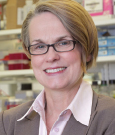The process of delivering novel treatments for patients with cancer involves a multifaceted and long-term interaction between three distinct entities: clinical researchers, who conduct the trials which test treatments; drug developers, including the pharmaceutical industry, which takes cancer drugs from the laboratory, through nonclinical studies, to the clinical trials; and the U.S. Food and Drug Administration (FDA), tasked with ensuring that drug development is conducted according to statutory standards, and that only safe and effective new treatments are approved for use in the United States.This is a rigorous process that involves the thousands of patients who make the trials possible and is constantly evolving as a result of increased scientific knowledge, discovery of novel drug targets and pathways, and improving clinical outcomes. Its complexity creates the need for new and flexible approaches to clinical trial and drug development.
In response, the Director of FDA’s Office of Hematology and Oncology Products, Richard Pazdur, MD, has initiated an oncology workforce project designed to recruit and train highly specialized clinician-scientists to hold joint appointments at the Office of Hematology and Oncology Products and at the Center for Cancer Research, at the Bethesda, Maryland, campus of the National Cancer Institute (NCI).
A Unique Career Choice
Specifically, at the Center for Cancer Research, candidates will continue their careers as academic clinicians in the NCI’s intramural program, serving as independent, tenure-track, principal investigators with the opportunity to develop cutting-edge clinical trials supported by the Center’s infrastructure. Similarly, at the FDA, candidates will develop an expertise in regulatory science with a focus on their area of clinical expertise as Associate Directors in the Office of Hematology and Oncology Products, which was reorganized in 2011 following a disease-specific model, similar to most large academic centers, to better meet the demands of an increasingly complex and rapidly changing knowledge base in the diagnosis and treatment of malignant diseases.
According to Dr. Pazdur, the impetus for the oncology workforce initiative was to address an inherent problem of recruiting experienced, disease-specific clinical trialists into its workforce. “We’ve historically had difficulty attracting people to enter at the mid-level career range. So the purpose of creating a joint NCI-FDA position was to provide a unique job opportunity for talented people outside of the government. Obviously, the mid-level salary structure is one impediment for attracting outside talent, so we have to offer unique opportunities that they wouldn’t see in the private sector. For instance, they can create and run a clinical trial at NCI’s Center for Cancer Research and then do review work at the FDA,” said Dr. Pazdur.
Asked how this initiative will help the overall drug approval process, Dr. Pazdur responded, “It’s important to note that these candidates, although they will go through a training process, will be chosen from academic levels equal to associate professors and professors with a background in oncology or hematology, with 5 to 10 years of clinical experience post completion of an oncology or hematology fellowship. Moreover, these candidates will be Board certified or recognized as experts in a specific area of oncology. So the FDA is looking to strengthen its ranks by integrating these individuals who have proven real-world experience.”
Susan Bates, MD, a Senior Investigator in the Developmental Therapeutics Branch of the Center for Cancer Research, stated that this exciting initiative is a wonderful opportunity for the NCI as well. “For decades, the NCI program in Bethesda has helped train many of our drug development investigators—both in academia and in industry. By providing the unique opportunity to work and train alongside FDA medical officers, this new initiative will bring an exciting and fresh perspective to the Center for Cancer Research. Our mutual goal is to create better therapies for patients, and we envision that by better understanding the FDA viewpoint on drug development, both investigators and trainees at the NCI will be able to achieve greater alignment with that goal. This can include avoiding the use of resources on clinical trials that do not advance an agent toward FDA approval. It is hoped that by interweaving FDA and Center for Cancer Research investigators, new ideas and energy will accrue to the development of clinical trials.”
Sanjeeve Bala, MD, a Medical Officer at the Office of Hematology and Oncology Products and former clinician in the Developmental Therapeutics Branch at NCI, added, “In order to be successful in the Center for Cancer Research, we’re looking for doctors who are experienced in disease-specific clinical research and who have successfully competed in a high-energy academic atmosphere. Also, ideal candidates will have developed and conducted their own investigator-initiated clinical trials and have a strong history of collaboration with translational scientists.”
Two Agencies Working Together
Dr. Bala noted that both he and Dr. Pazdur have discussed ways in which the new investigators could help develop new dialog between the FDA, the Center for Cancer Research, and the pharmaceutical industry, aiding in the development of a more sophisticated drug development process. By bringing to the table their real-world clinical research experience, these investigators will develop their careers as thought leaders in regulation for their specific disease areas. Moreover, given the focus of the new workforce initiative, both the FDA and the Center for Cancer Research—separate government agencies—acknowledge the mission for the advancement of medical research and, in particular, the development of new therapies for cancer treatment. To that end, the two agencies, through this program, have agreed to increase opportunities for sharing information, material, and intellectual resources.
Dr. Pazdur explained, in a nutshell, that the staff of the Office of Hematology and Oncology Products consists of over 130 highly trained physicians, scientists, and regulatory project managers with expertise in oncology, hematology, internal medicine, pharmacology/toxicology, and regulatory affairs.
As for the Center for Cancer Research, it supports more than 250 scientists and clinicians, organized into more than 50 branches and laboratories, conducting basic, clinical, and translational science. The Center’s researchers pursue high-risk, high-impact research and translate their discoveries into clinical applications using the infrastructure provided by the National Institute of Health’s Clinical Center, the largest clinical research hospital in the world.
Possible Expansion Into Other Sectors
According to Dr. Pazdur, the oncology workforce program could be a model for other sectors in the government. “The reason I called this initiative the oncology workforce program was because if it is successful, I can see it branching outside of the FDA into other areas of the Health and Human Services department and perhaps the Centers for Medicare & Medicaid Services. But those discussions have not taken place at this time.”
Drs. Pazdur and Bala said that the recruitment process was ongoing. “Given the multiple responsibilities involved and having to work within two government cultures, we are not in any rush. We just want to find the best candidates possible,” said Dr. Bala. ■
Disclosure: Drs. Pazdur, Bala, and Bates reported no potential conflicts of interest.




